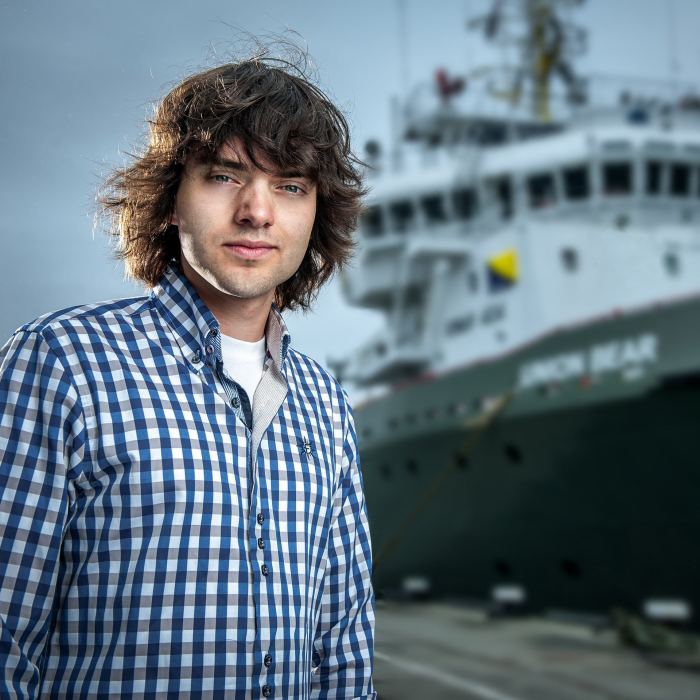Boskalis, as one of the partners in the EcoShape consortium, has embarked on a five-year Building with Nature project to halt coastal erosion in northeast Java, Indonesia.
With some 70,000 residents in the Demak district, urgent action was needed as the coastline has been retreating at an alarming rate. In some places more than three kilometers of land has already been taken by the sea. Through a unique integration of mangrove restoration, small scale engineering and sustainable land use the tide will be turned.
Floods occur on almost a daily basis and many villages have been abandoned as people lost their land and livelihood from shrimp and fish farming. Mangrove forests that can help dampen waves and stabilize sediment have been chopped down for aquaculture development. There is also significant subsidence from the extraction of freshwater, which is making the impact of rising sea levels even worse. EcoShape knew that it could help prevent the situation from getting any worse by using the Building with Nature principles to restore the mangrove coast.
Fokko van der Goot, EcoShape Program Manager and Senior Environmental Engineer at Boskalis, and Femke Tonneijck, Program Manager at NGO Wetlands International, which is leading the Java project, explain why a technical solution is not enough to make this crucial project a success. Education and socio-economic considerations are just as important.
Why is there such a rapid rate of coastal erosion in this area?
Fokko: “For centuries the local people had been cultivating paddy fields, maintaining a mangrove greenbelt, but since the seventies salt water started to intrude and in the 1980s rice prices plummeted so instead, they turned to shrimp farming. However, frequent losses of shrimp harvests due to diseases pushed farmers to open new ponds in the mangrove greenbelt. The coastal ecosystem consequently collapsed and started eroding very quickly as sediment was washed away because the mangroves had been destroyed.”
Femke: “Unfortunately, also no attention was paid to proper surface water management so that freshwater needs to be obtained from deep wells resulting in subsoil collapse and subsidence: the land is in fact sinking. The Indonesian government had tried to rectify the situation by installing breakwaters and seawalls. But these make the situation worse as they block the sediment input onto the land, so that subsidence is not counteracted by land buildup. Restoring the mangrove belt by planting mangroves also failed, since the trees can no longer thrive in the deeper waters. The sediment balance has to be restored first and only then the mangrove can return naturally.”
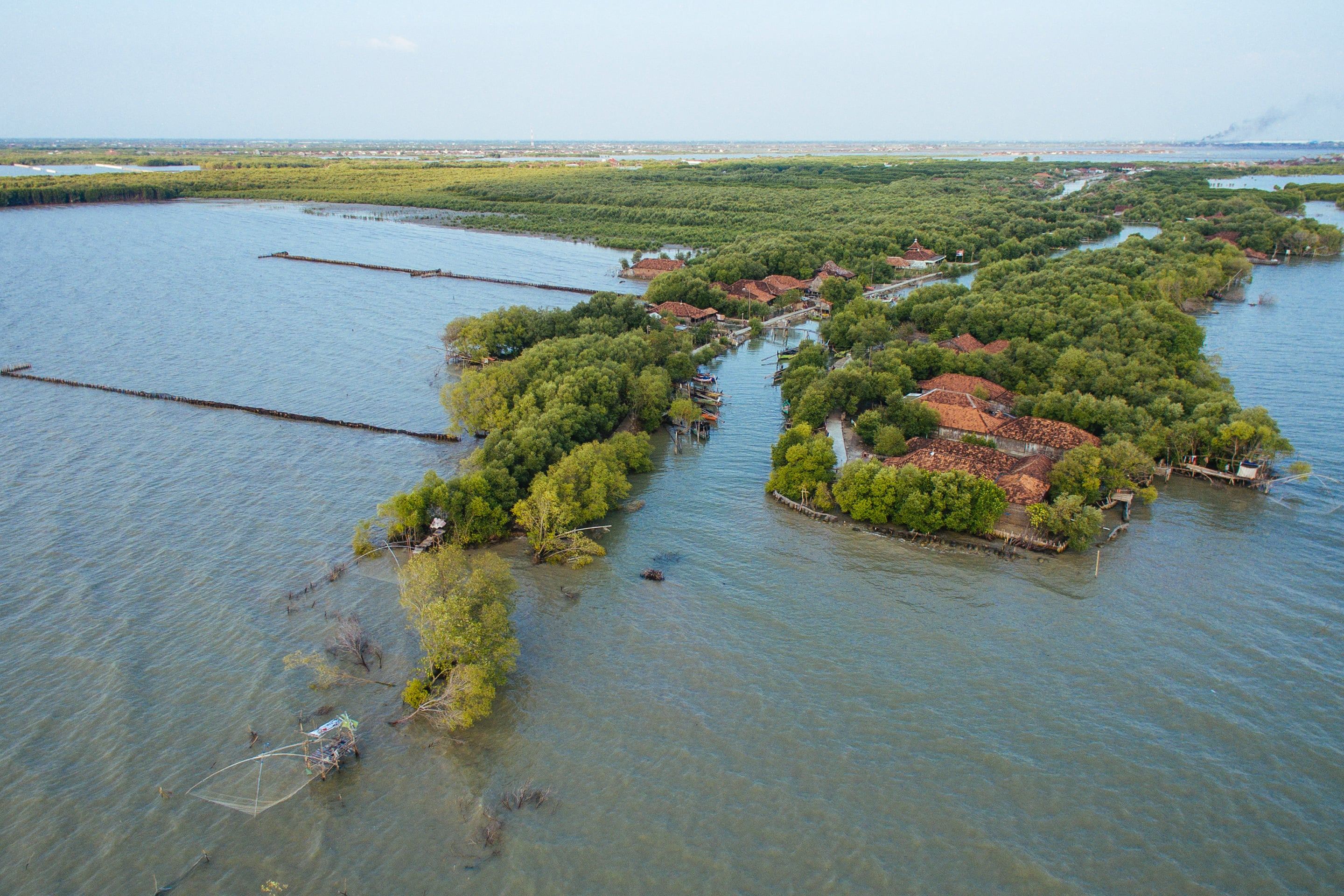
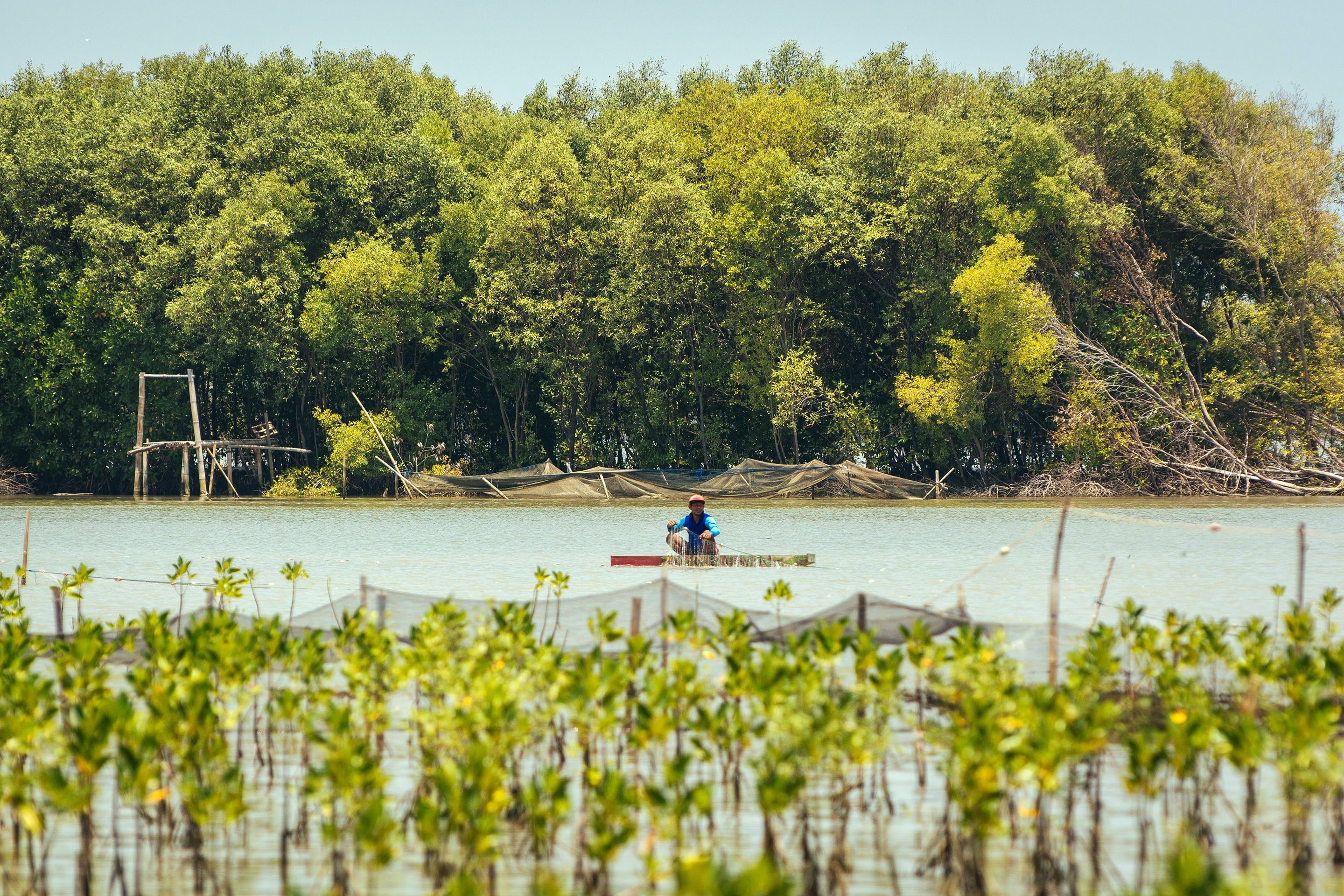
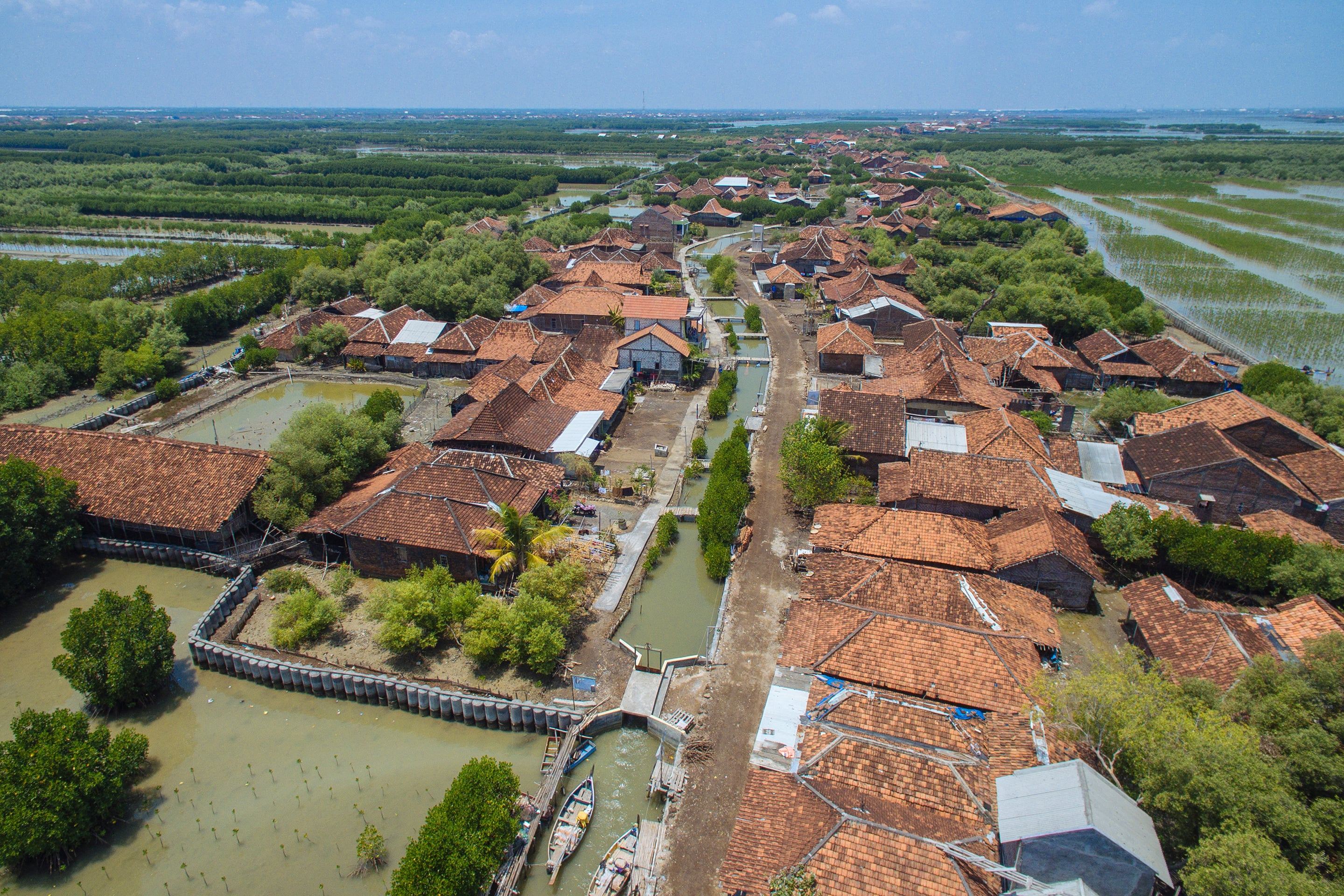
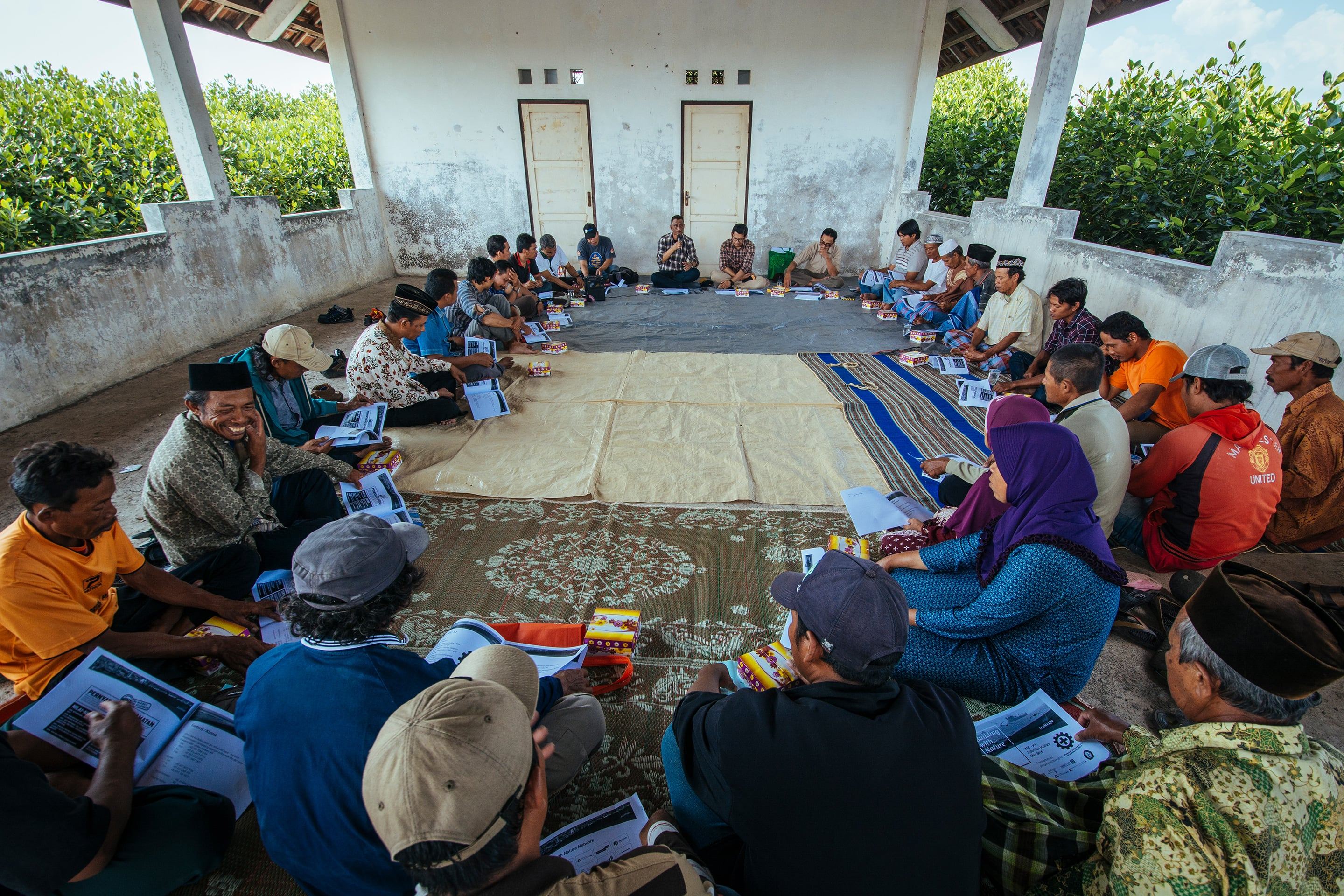
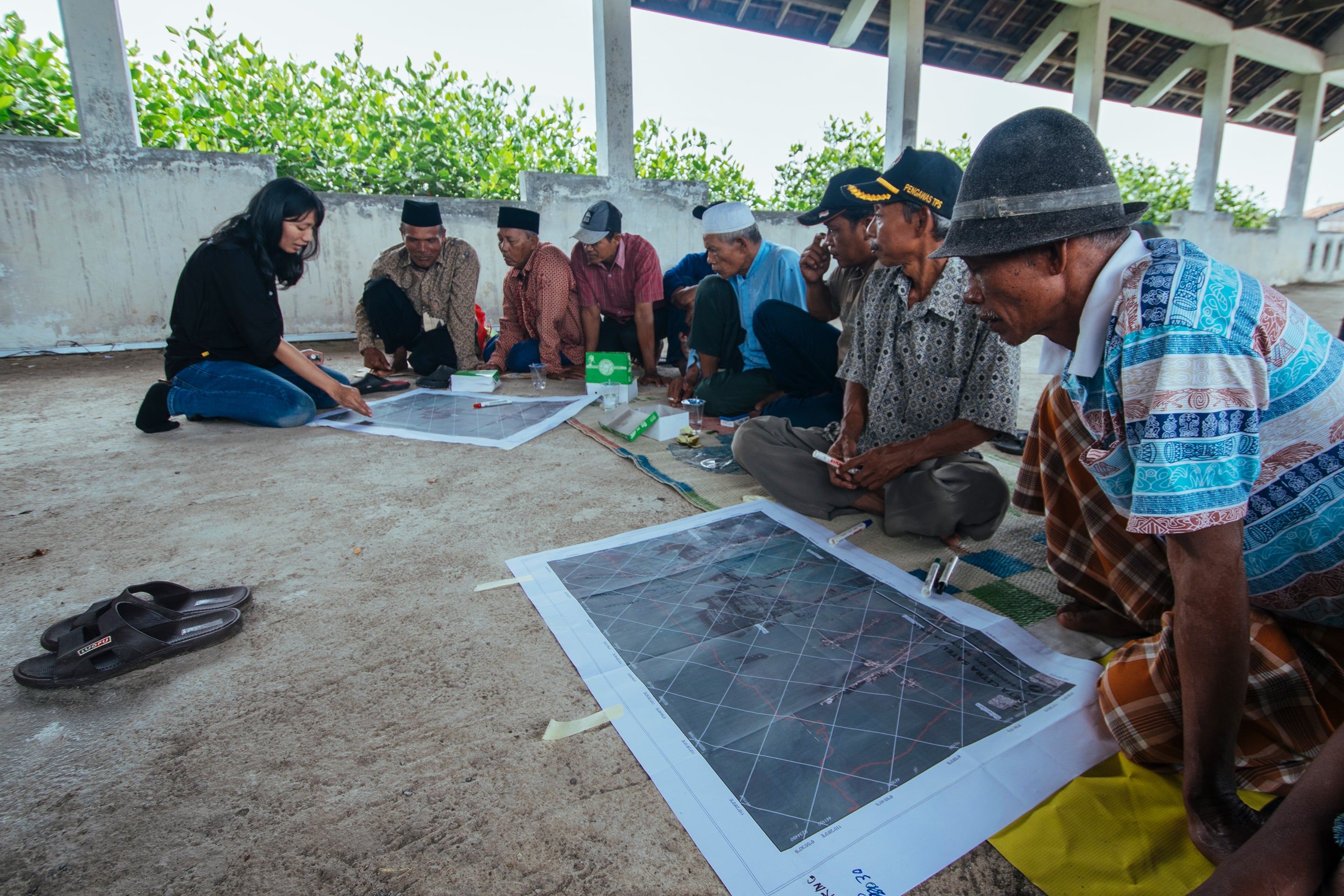
What does the Boskalis and Wetlands International combination bring to the project?
Fokko: “Boskalis is a specialist in managing sediment and in Java we are specifically looking at how sediment can be brought to the shore to restore the coastline. The coastal zone in Demak is still rich of sediment, however, there are many similar coastal zones around the world that experience shortage of sediment due to unsustainable coastal management. We like to learn how these systems work in order to explore opportunities to actively bring sediment to strengthen the shore. And Wetlands International is known for its ability to connect scientific and technical knowledge to policy development and practical implementation. It actively engages communities in developing and implementing solutions, so that people benefit and are able to better care for their environment. Their mangrove conservation track record dates back 25 years.
We believe it may transform the way in which erosion problems are addressed along mud-coasts across the tropics.
The Dutch are famed for their water management – where did the inspiration for the Java project come from?
Fokko: “Actually, we were inspired by how the Netherlands used to reclaim land centuries ago by constructing permeable dams made from willows. The dams were used to dampen the waves and take the energy out of the water, while the sediment could still filter through and accumulate and settle behind the dams. In Java the approach is similar; villagers hammer bamboo poles at least two meters into the seabed and use bundles of brushwood from the shore. These are bound together to form dams of about 100 meters long. In one year, the level of the bed can rise up to 50 centimeters!”
Femke: “Wetlands International, which has had an office in Indonesia for decades, started working in the area in around 2011. The Indonesian government became interested immediately and we conducted a successful pilot study together. The permeable dams are actually temporary, once the sediment has built up the mangroves can recruit naturally and can stabilize the soil.”
The project has been underway for some 18 months, what has been achieved so far – is it already possible to see some changes?
Fokko: “Yes, absolutely. You can see there is already quite a lot of sedimentation build-up behind the dams and natural mangrove regrowth. We have jointly created around 2,000 meters of dams. And because the consortium has managed to get local authorities and the Indonesian government on board, it has invested in a further 1,500 meters. The aim is to have at least 90 hectares of mangroves restored when the project concludes.”
The EcoShape consortium team has a multidisciplinary character. Could you explain why this is so important?
Fokko: “We cannot just provide a technical solution in Demak. There are many ecological and social-economic issues to be addressed through the program. Here we see the benefit of the multidisciplinary character of the Building with Nature program. Our team consists of companies with a lot of engineering expertise like Boskalis and Witteveen+Bos, but also includes research institutes like Deltares and Imares, NGOs like Wetlands International and Blue Forests as well as local and national governmental institutes. This enables us to tackle the situation in an integrated manner.”
And it is not always easy to convince local residents – how do you change their minds?
Fokko: “In the first place, the local community had to be convinced that a wide natural mangrove belt is needed for their own safety and for keeping their houses and land. We have to show not only why the mangroves are important, but also why we rely on natural regeneration instead of planting once the sediment balance is restored. It is not just a matter of planting them. We believe that a naturally restored coastal zone is more resilient and sustainable than when mangrove trees are just planted. This is a hard message to get across as mangrove planting is very popular and people want to do something. In addition, we had to show that they can still farm shrimp behind the restored mangrove greenbelt. This is their livelihood. So a lot of education and training is needed.”
Femke: “Wetlands International is very experienced in working with the villagers and helping to educate them about why these greenbelts are necessary. We have for example recently set up Coastal Field Schools to train villagers in critical thinking skills so that they can identify and develop successful aquaculture practices and care for the mangroves they depend on for coastal safety and water purification. Typically, our trainers will educate 16-20 people from several villages and then those villagers become local heroes and each train other villagers and so on. It is self-perpetuating. By introducing best management practices and farming multiple species, aquaculture productivity can be greatly enhanced. Mangroves can provide additional income, as they provide fruit, tea and a rich habitat for crabs etc. It can go hand in hand.”
The aim is to have at least 90 hectares of mangroves restored when the project concludes.
Can you tell the readers more about the importance to link restoration of the mangrove greenbelt to sustainable development?
Femke: “Yes, this is vital to avoid the situation whereby restored mangroves are reconverted into aquaculture ponds. Wetlands International has developed an incentive mechanism to connect restoration with sustainable development, called Bio Rights. For example, we provide financial support and training so that farmers can revitalize their shrimp ponds, can start a crab farm or develop ecotourism. In return for this support, villagers help to maintain permeable dams, they monitor mangrove recovery and safeguard the mangroves once restored. In some cases farmers need to give up ponds near the seafront or along rivers to facilitate mangrove restoration. This will then be compensated, for example by achieving higher aquaculture productivity in ponds behind the intended greenbelt.”
Creating New Horizons is very much the theme of many Boskalis projects and of course of this magazine; in what way do you think this project fits the bill?
Fokko: “Physically of course, there is literally a new horizon – a new mangrove forest! As mentioned, this is a great opportunity to learn as much as possible. We will start a local sediment nourishment scheme in 2017 on a small-scale. For example, can we as a dredging company actively bring fine sediments to eroded mangrove coastal zones to speed up the natural growth rate? Looking at the equator, we could take a similar approach in countries with comparable vulnerable coastlines such as Vietnam, the Philippines, Malaysia, Bangladesh, India, as well as in Africa and Central America. Actually, we have just signed a Memorandum of Understanding with Conservation International Suriname for a similar program.”
Femke: “This represents a new way of looking at coastal safety and coastal defense systems. It is a low-tech solution but it requires high-tech knowledge and expertise. In many settings it is not ecologically and economically feasible to implement hard infrastructure solutions, such as dams or dikes, while this approach is cost-effective and brings multiple benefits to various stakeholders by restoring ecosystem services. We believe it may transform the way in which erosion problems are addressed along mud-coasts across the tropics.”
